Experience fast heat relief
Kore Kooler®
Rehab Chair
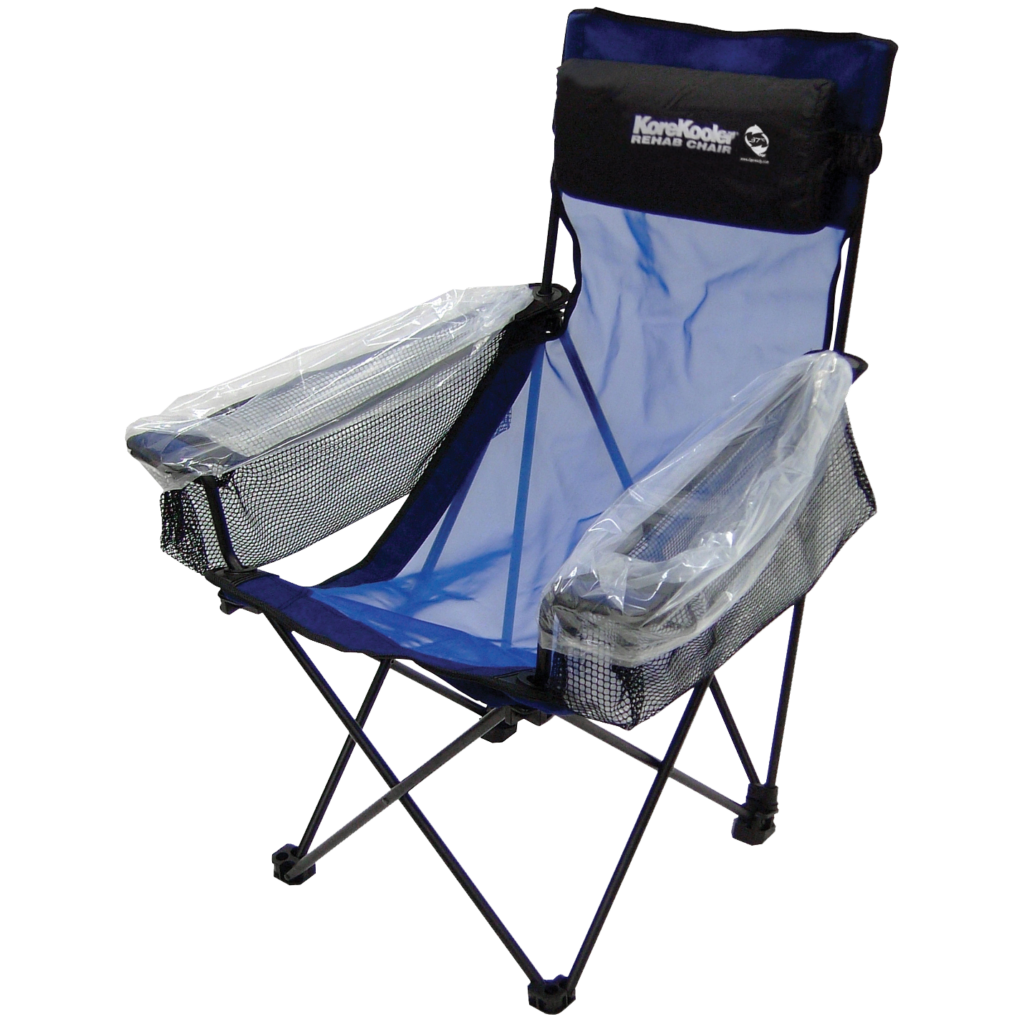
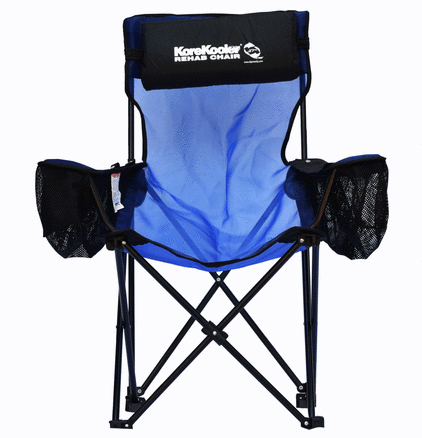
Combat Heat Stress
With Active Cooling
What is heat stress? Heat stress occurs when the body’s internal core temperature rises above its average level. As your core temperature rises, so does the risk of heat stress symptoms.
The Kore Kooler Rehab Chair provides an effective means of lowering body temperature through hand and forearm immersion. Combined with rest and hydration, hand and forearm immersion is a safe, impactful way to reduce the impact of stress on health and safety.
Let’s learn more about the problem of heat stress, the heat illnesses that heat stress causes, and how the Kore Kooler Rehab Chair can help!
What causes heat stress?
Heat stress occurs when your body cannot get rid of excess heat. Heat stress causes include high air temperature and humidity, low acclimation to working in extreme temperatures, and non-breathable clothing.
A variety of personal factors, including your overall physical condition, history of previous exposure, percentage of body fat, and hydration status, can also impact your response to severe weather exposure.
High Air Temperature
If the air temperature is as warm or warmer than the skin (91.5°F), heat transfer away from the body decreases to the point where it reverses; thus, the body gains heat.
In these circumstances, the heart continues to pump blood to the body surface, where the sweat glands empty electrolytes and water onto the skin surface. Evaporation becomes the only effective method of maintaining body temperature.
hIGH aIR tEMPERATURE
nON-breathable cLOTHING
Protective clothing inhibits heat transfer between the body and the surrounding environment.
If clothing does not allow moisture to transport away from the body, the environment between the body and clothes quickly becomes saturated with moisture. This affects the body’s ability to lose heat through the evaporation of sweat.
NON-BREATHABLE CLOTHING
lOW aCCLIMATION
Acclimation to hot environments is necessary to allow individuals’ bodies to adapt to high heat. Acclimatization can take several days to weeks depending on the heat exposure level relative to the typical environment that workers may be used to.
Older people also experience a slow response of sweat glands and therefore a less effective control of body temperature.
lOW ACCLIMATION
High hUMIDITY
Under high humidity conditions, even the evaporative mechanisms decrease, and the body’s efforts to maintain an acceptable temperature are significantly impaired.
With a large quantity of blood going to the external surface of the body, little remains for the active muscles, the brain, and the internal organs, leading to declines in strength, with fatigue occurring quickly.
HIGH HUMIDITY
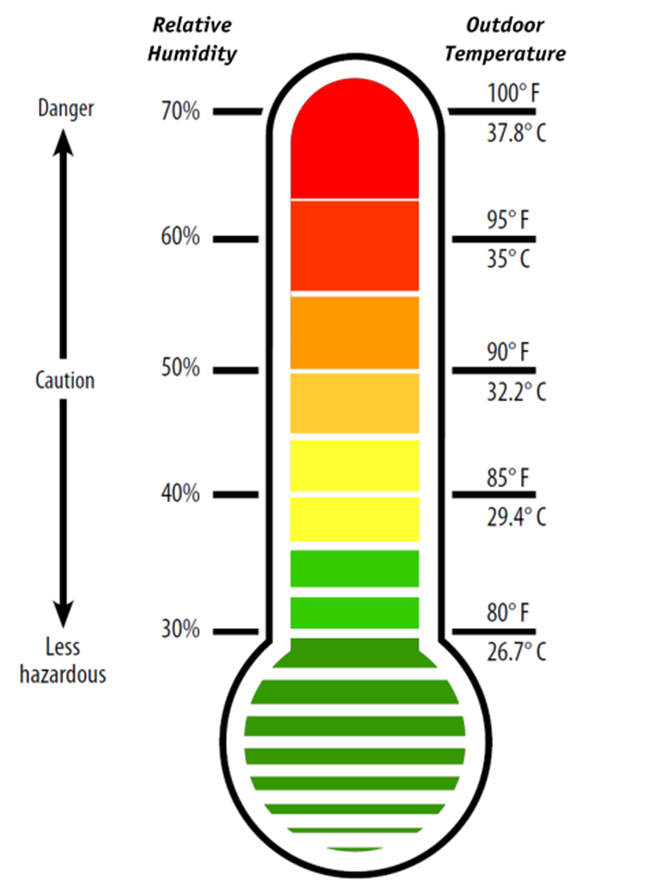
The impact of Heat Stress
Work performance and core body temperature are strongly linked, and heat stress impacts the body’s automatic temperature regulation. The brain typically adjusts various bodily functions, such as blood flow, heart and respiratory rate, and sweating, but that changes as heat stress increases. Routine tasks become impaired when the body’s regulation fails, and core body temperature moves away from normal.
As the air temperature rises, the body stays cool when sweat evaporates. On hot, humid days, increased moisture in the air slows the evaporation of sweat. Without proper cooling, body temperature rises, and heat illness occurs.
Who is affected by heat stress?
Heat stress can affect anyone: the young and old, athletes, and professionals working indoors or outdoors.
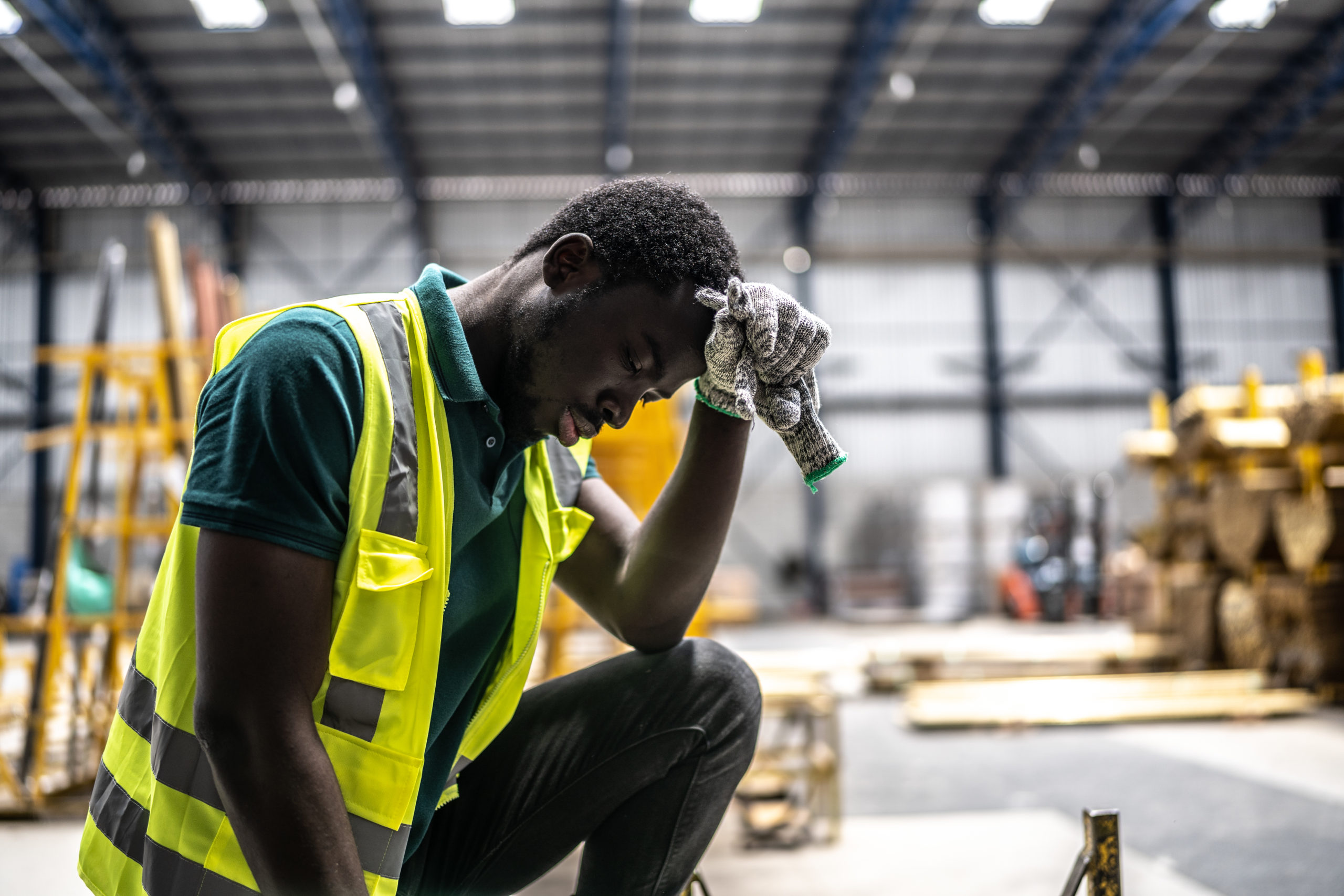
INDUSTRial WORKERS
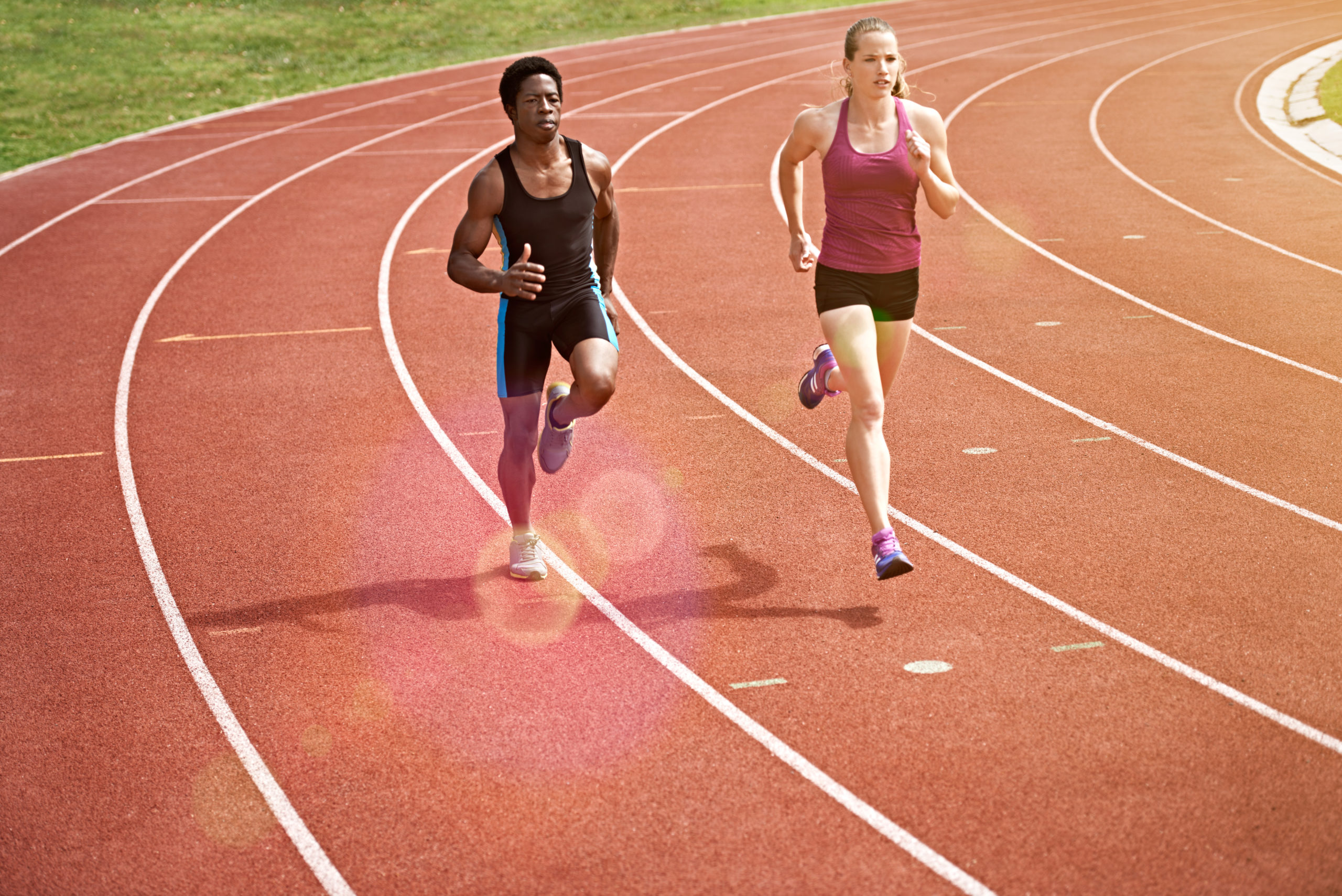
ATHLETES
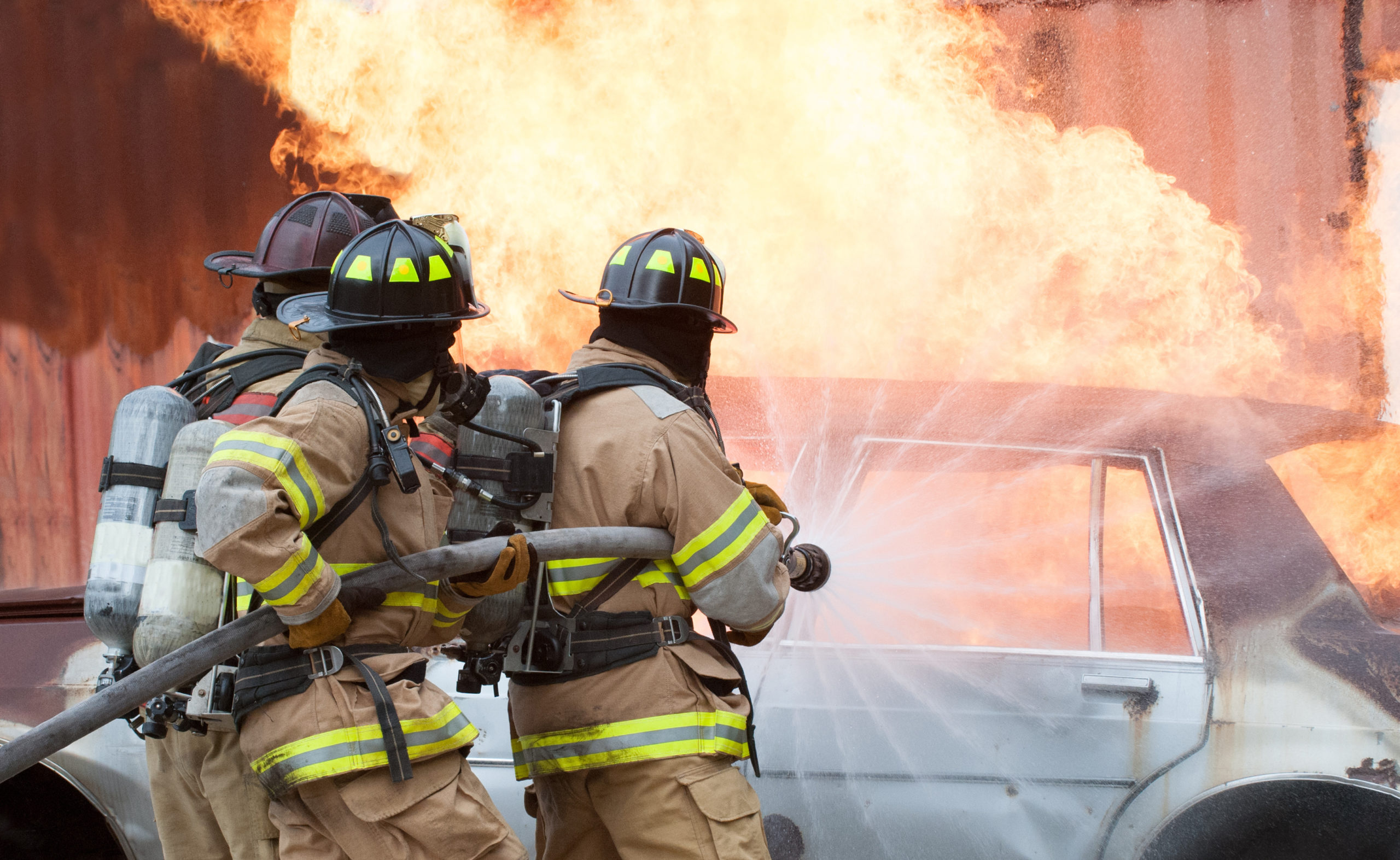
Emergency Responders

Event Attendees
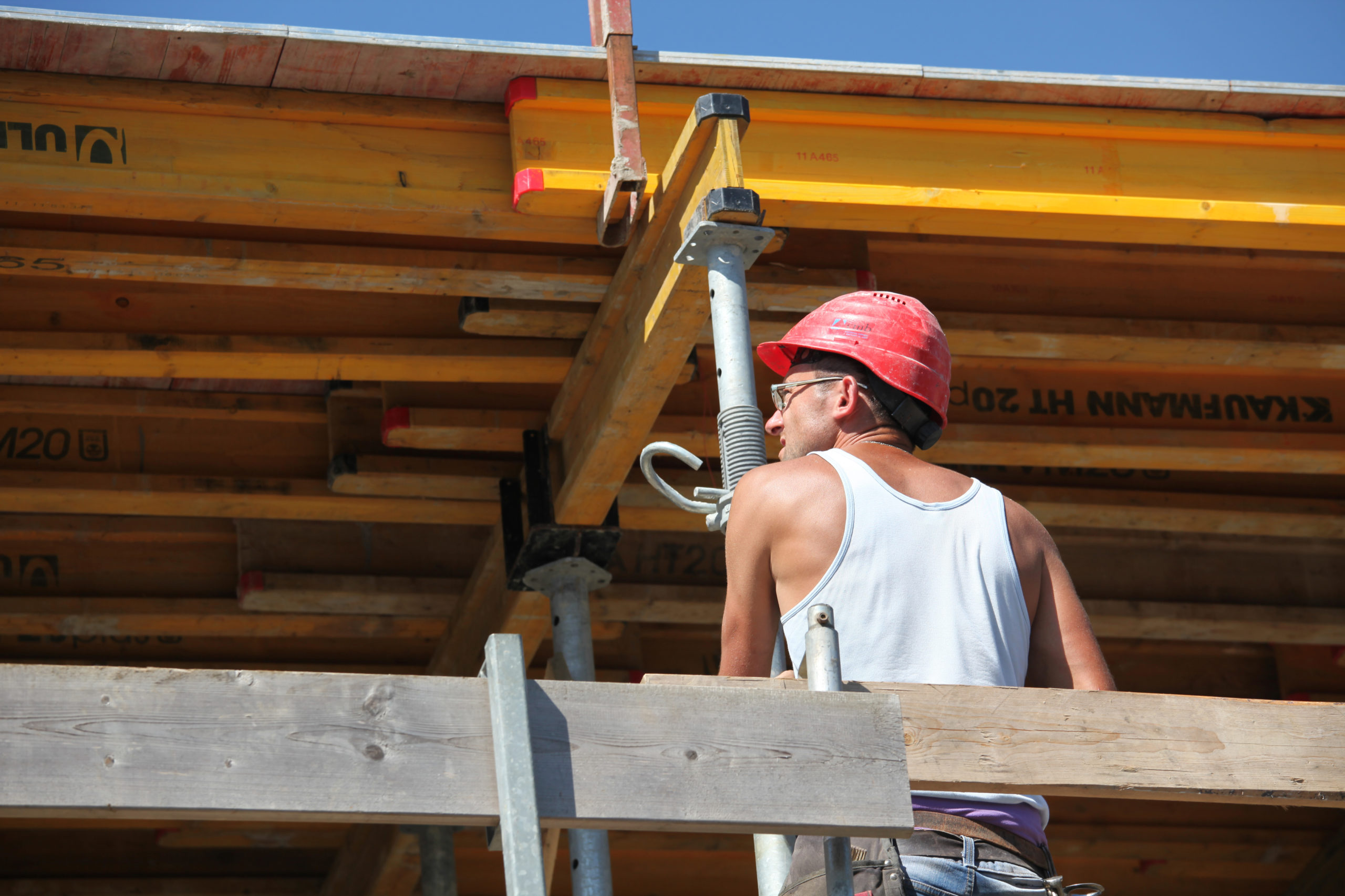
Construction workers
What is Heat Illness?
Heat-related illness describes a range of conditions that result from the body’s inability to cope with the heat. Familiarizing yourself and recognizing the signs of heat stroke and other heat illnesses is critical for heat safety and the prevention of heat emergencies.
The most severe heat-induced illnesses are heat exhaustion and heat stroke. What’s the difference between heat stroke vs. heat exhaustion? If left untreated, heat exhaustion could progress to heat stroke and death. Heat exhaustion typically occurs when core body temperature is between 98.6°F to 104°F (37°C to 40°C). The likelihood of heatstroke increases as your core temperature reaches 104°F (40°C), and body temperatures that exceed 106°F (41.1°C) generally are catastrophic and require immediate aggressive therapy. The exact temperature at which heat illnesses occur varies among individuals.
Heat-Related Illness signs and treatment
Heat rash
Heat rash is a skin irritation caused by excessive sweating during hot, humid weather.
Heat rash Symptoms
heat rash treatment
Heat Cramps
Heat cramps are painful muscle cramps that occur during work/exercise in a hot environment due to excessive sweating and insufficient fluid intake. The onset of cramping pain may be delayed and emerge a few hours after an individual has stopped being active.
Heat CrampS Symptoms
heat cramps treatment
Heat Syncope
Heat Syncope is a fainting episode or dizziness that occurs when standing too long or suddenly standing up after sitting or lying down. Factors that contribute to heat syncope may include dehydration and lack of acclimatization.
Heat Syncope Symptoms
Heat Syncope Treatment
Rhabdomyolysis
Rhabdomyolysis (Rhabdo) occurs when damaged muscle tissue releases its proteins and electrolytes into the blood. Rhabdomyolysis is a serious medical condition that can damage the heart and kidneys, cause permanent disability, or lead to death.
Rhabdo symptoms
(The only way to properly diagnose Rhabdo is through blood tests. You can’t tell by symptoms alone since heat exposure conditions like dehydration and heat cramps can cause the same symptoms.)
Rhabdo treatment
Heat Exhaustion
Heat exhaustion is a potential heat emergency due to excessive fluid and electrolyte loss. Heat exhaustion occurs from sweating while working in a hot, humid environment, causing the body to overheat. If signs of heat exhaustion are untreated, it may progress to shock or heat stroke.
Heat Exhaustion symptoms
Heat Exhaustion treatment
Heat stroke
Heat stroke, also called sunstroke, is a life-threatening emergency due to the body’s inability to regulate its core temperature. As the body’s water and salt supplies decline, its temperature rises to extreme levels to the point where brain injury and damage to other internal organs may result.
Heat Stroke Symptoms
Heat Stroke Treatment
Your heat stress relief Solution

The Kore Kooler Rehab Chair relieves heat stress symptoms through a cooling process called forearm immersion. Many blood vessels run through your arms and hands, close to the skin’s surface, making forearm immersion cooling an excellent method to reduce your core temperature safely.
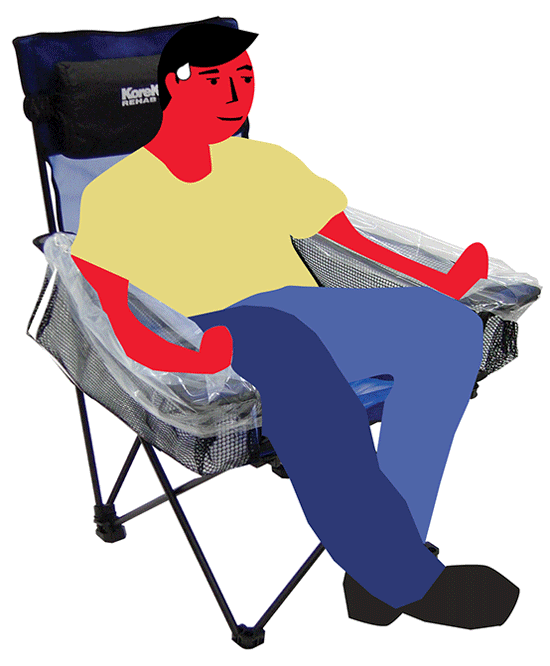
How Does forearm immersion work?
using the Kore Kooler Rehab Chair
Kore Kooler Shop
Order the Kore Kooler Rehab Chair today! The Kore Kooler Shop is powered by dqeready.com. Your cart will open in a new window.
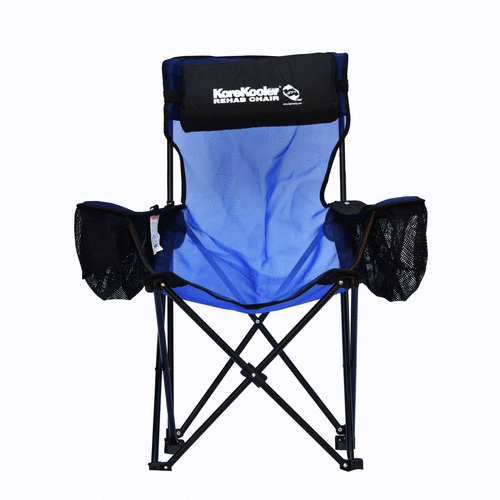
Kore Kooler Rehab Chair
SKU: RH2001
Lower your body temperature through forearm immersion with this cooling chair. The sling construction of the chair provides a hammock effect for support and relaxation. The attached armrest flaps cover water reservoirs when not in use.
Specifications
Additional Contents
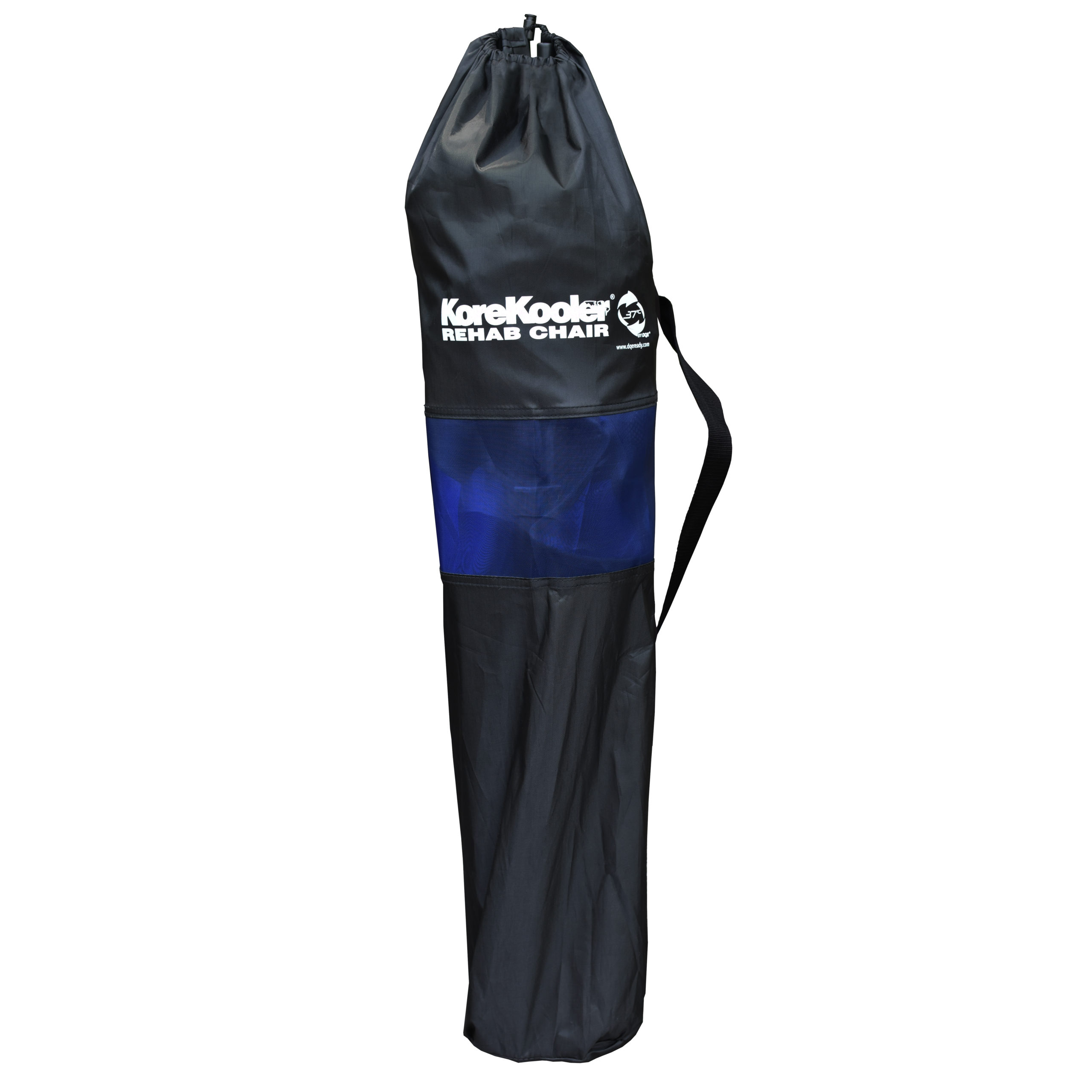
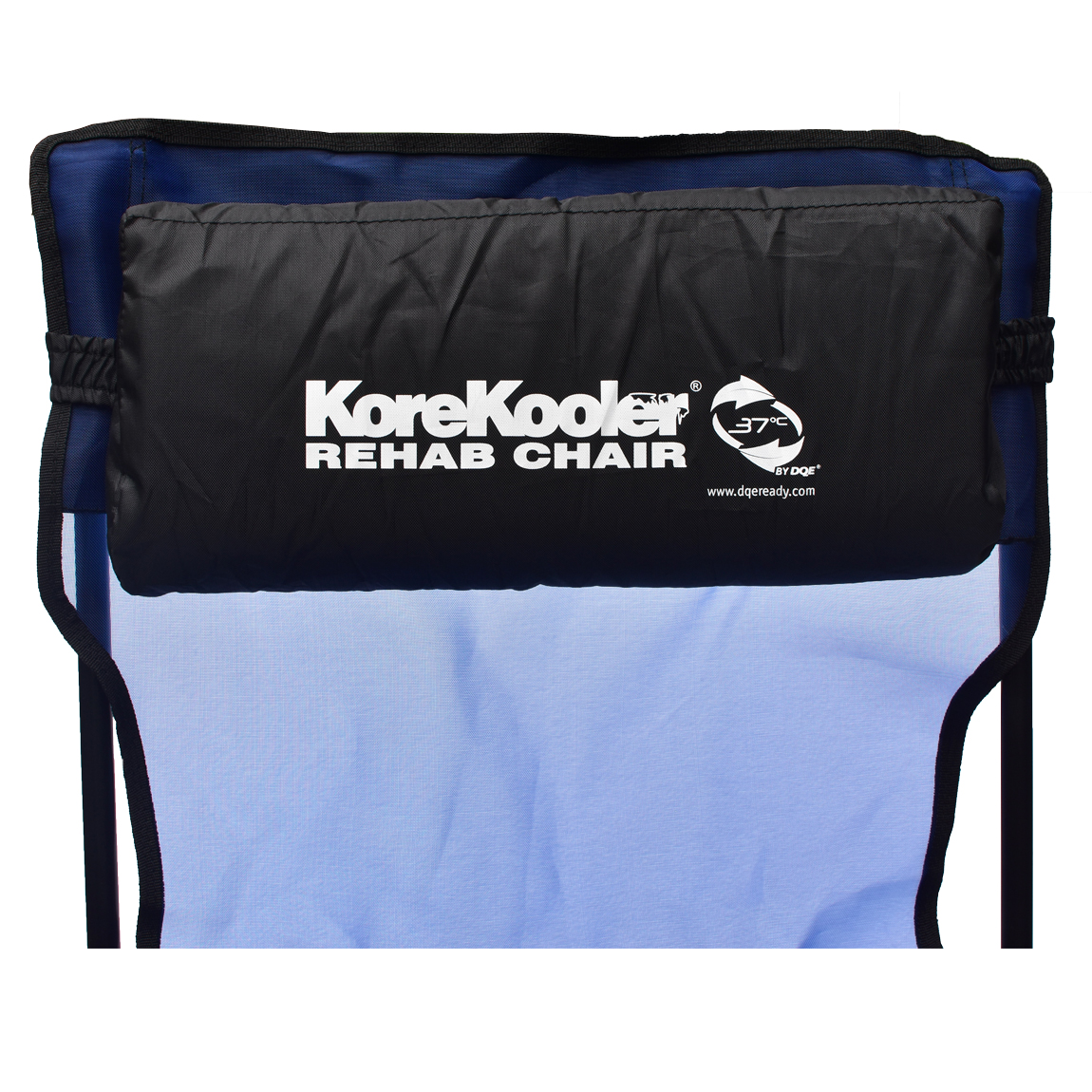
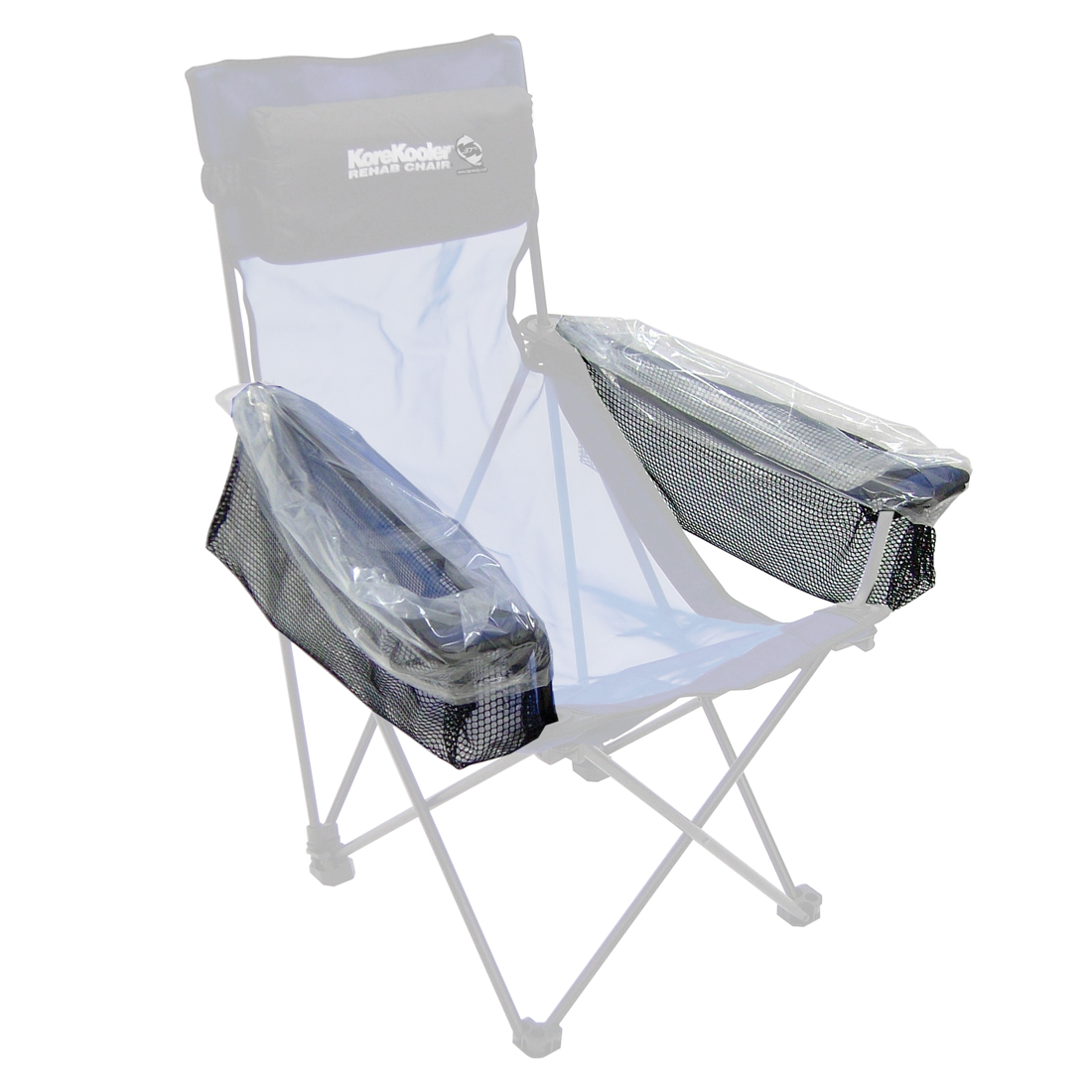
Accessories
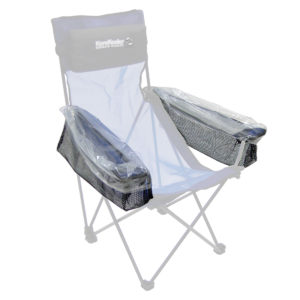
Replacement Reservoir Bags
SKU: #RH2002
Quantity of 30 replacement bags for the Kore Kooler Rehab Chair. Specially sized for chair’s arm reservoirs.
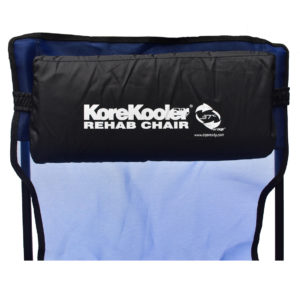
Replacement Headrest
SKU: #RH1999
Replacement head cushion for the Kore Kooler Rehab Chair that attaches with an elastic band.
Contact Us
Have questions about the Kore Kooler Rehab Chair? We’re here to help!
Testimonials
Industrial Sales Manager
“We used [the Kore Kooler Chair] on a job, and my boss fell in love with it. He even took it for his little girl to use at a softball tournament.”